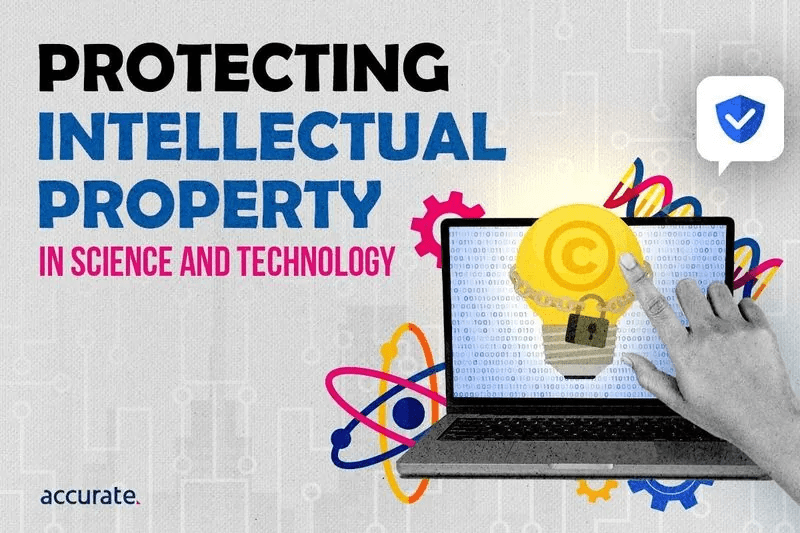As an individual or company operating in the science and technology sector, you know that your ideas, inventions, and innovations are invaluable. These are more than mere products of your creativity – they are your intellectual property (IP), the lifeblood of your business.
The concept of intellectual property in these industries is not just about patents, trademarks, or copyrights. It encompasses the unique knowledge, skills, designs, and concepts you develop, which give you a competitive edge in your industry.
In today’s knowledge-based economy, the value of intellectual property cannot be overstated. And, while intellectual property is essentially an intangible asset, its worth can surpass that of tangible assets in many science and technology companies.
So, preserving and protecting your intellectual property is crucial to your business’ growth, reputation, and success.
However, one of the often-overlooked avenues through which intellectual property can be compromised is through your employees.
This is where employment screening comes in.
What is Intellectual Property in Science and Technology?
When it comes to intellectual property in science and technology, you’re dealing with a wide range of elements, from proprietary processes and algorithms to innovative products and trade secrets.
In the realm of science, this can involve new methods of research, unique chemical compounds, or novel applications of existing technologies. In technology, it might encompass software code, technical schematics, or unique business models.
While legal mechanisms like patents, trademarks, and copyrights are essential for protecting your intellectual property, they’re not completely foolproof.
In fact, they can make your intellectual property more visible and attractive to those with malicious intentions. Therefore, these legal protections must be supplemented with practical measures, including employment screening.
It’s important to understand that your employees are both your greatest asset and your greatest vulnerability regarding intellectual property. They have access to your proprietary information, and if not properly vetted, they could pose a risk to your intellectual property.
The Importance of Employment Screening in Protecting IP
Employment screening is a process that allows you to verify the information that a candidate provides when applying for a job position. This includes checking their educational qualifications, employment history, criminal records, and any other relevant information.
But beyond these basics, employment screening in protecting intellectual property involves assessing a candidate’s integrity, trustworthiness, and respect for IP rights.
You need to ensure that the potential employee understands the significance of intellectual property in your industry and is committed to preserving it. This might entail checking if they have previously been involved in any IP disputes, whether they have a history of respecting their employer’s IP rights and gauging their attitude towards intellectual property during the interview process.
Proper employment screening can help you identify potential threats to your intellectual property before they become a problem. It’s a proactive approach to IP protection that can save you a lot of trouble down the line.
Failure to carry out adequate employment screening can result in hiring employees who may misuse, steal, or unintentionally expose your intellectual property, causing significant damage to your business.
Conducting Risk Assessments for Employment Screening
Before implementing screening, science and tech companies should conduct risk assessments for roles that access IP. Assessments evaluate the impact of IP loss in each position and the controls needed to mitigate risk.
This determines the appropriate level of screening.
Factors that indicate higher risk include:
- Access to unpublished research, formulas, designs or software
- Ability to make copies of or extract IP
- Unsupervised access to restricted systems, labs or facilities
- Interaction with competitors and opportunity to sell IP
Other factors to consider include the candidate’s previous employment and their reasons for leaving. An employee who has frequently switched jobs in your industry might pose a risk in terms of potentially leaking trade secrets.
Similarly, an employee who was dismissed from a previous job for violating IP rights is a clear red flag.
Lower-risk jobs may only need basic screening, such as a criminal check. Higher-risk roles require extensive verification, like employment history, references, and licensing confirmation.
Note: Updated screening should also occur during employment, especially after promotions or department changes.
Employment Screening Checks and Intellectual Property Protection
Science and technology firms can utilise the following screening checks to protect intellectual capital:
- Criminal History Checks – Police checks for convictions like fraud, theft, and cybercrime signal risks of IP loss. Identity verification confirms candidates are who they claim.
- Education and Employment Verification – Checks all claimed qualifications and work history to uncover embellishments or fabrications. This detects falsified expertise to access IP.
- Professional Reference Checks – Speaking with former managers and colleagues provides insight into ethics, reliability, and handling of confidential data.
- Digital Footprint Review – Scans social media and the web for information on character and any competitive affiliations. This uncovers risks, like links to rival firms.
While no single check guarantees IP protection, together, they form a robust screening programme that minimises recruitment and talent management vulnerabilities.
Developing a Comprehensive Employment Screening Policy
Science and technology companies need a formal, documented policy to implement successful IP protection through employment screening. The policy should outline the steps you will take to vet potential employees and the criteria you will use to assess their suitability for the role.
Key elements of a screening policy include:
- Defined job-specific requirements for the level of screening aligned to IP risk profiles
- When screening should occur at hiring, promotions, role changes, and during employment
- Who conducts checks – most firms use a third-party screening provider like Accurate Australia for independence and expertise.
- Adverse finding procedures – how to interpret and act on screening results indicating risk
- Policy communication training staff on the policy and their responsibilities
- Compliance and auditing regular reviews to ensure adherence and effectiveness
Refer to our guide on constructing a screening framework for more policy best practices.
Key Takeaways
- Intellectual capital is the most valuable asset in the science and technology sectors. However, insider threats and staff turnover create constant risks of IP theft.
- Robust employment screening provides an essential safeguard by thoroughly vetting staff, consultants and contractors according to role-based risk profiles.
- Checks like criminal record searches, qualification verification and reference checks identify potential threats before access to IP is granted.
- Ongoing screening then monitors staff for emerging risks.
- Science and tech firms need tailored policies and procedures appropriate to their risk exposure to implement screening effectively.
Protecting innovation and maintaining competitive advantage in today’s data-driven economy depends on securing intellectual property.
Companies can tackle this challenge by partnering with employment screening experts like Accurate Australia to recruit and manage talent confidently. To learn more about our services, contact our team today.



